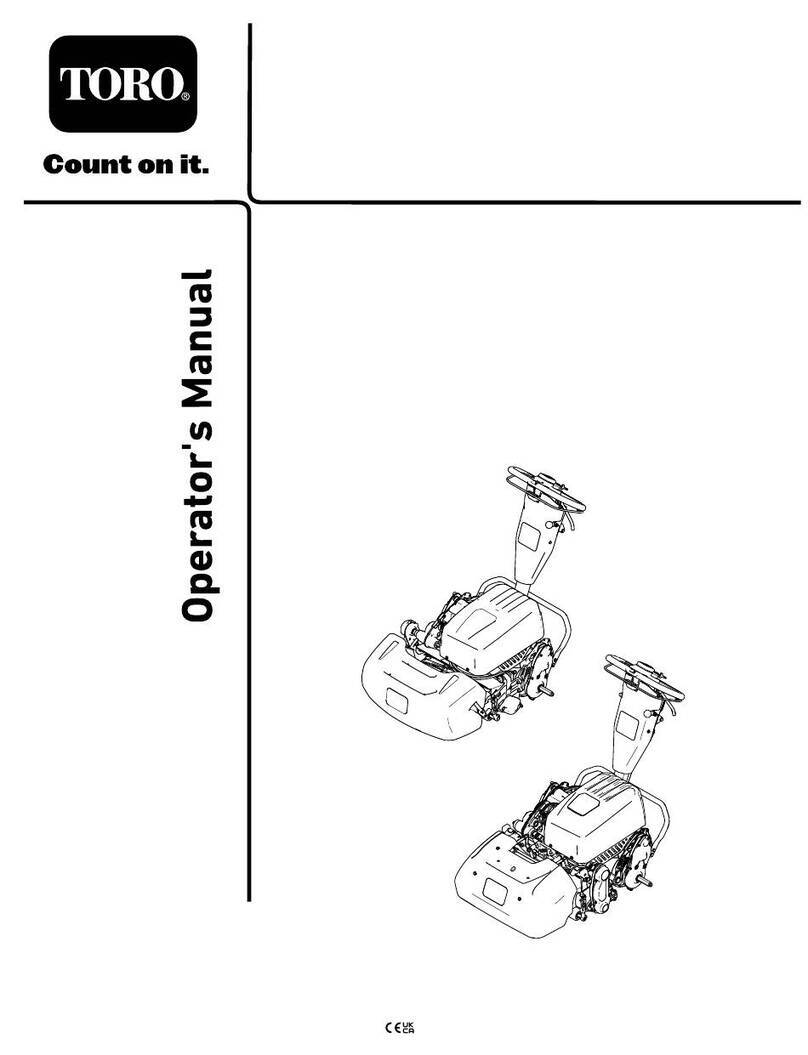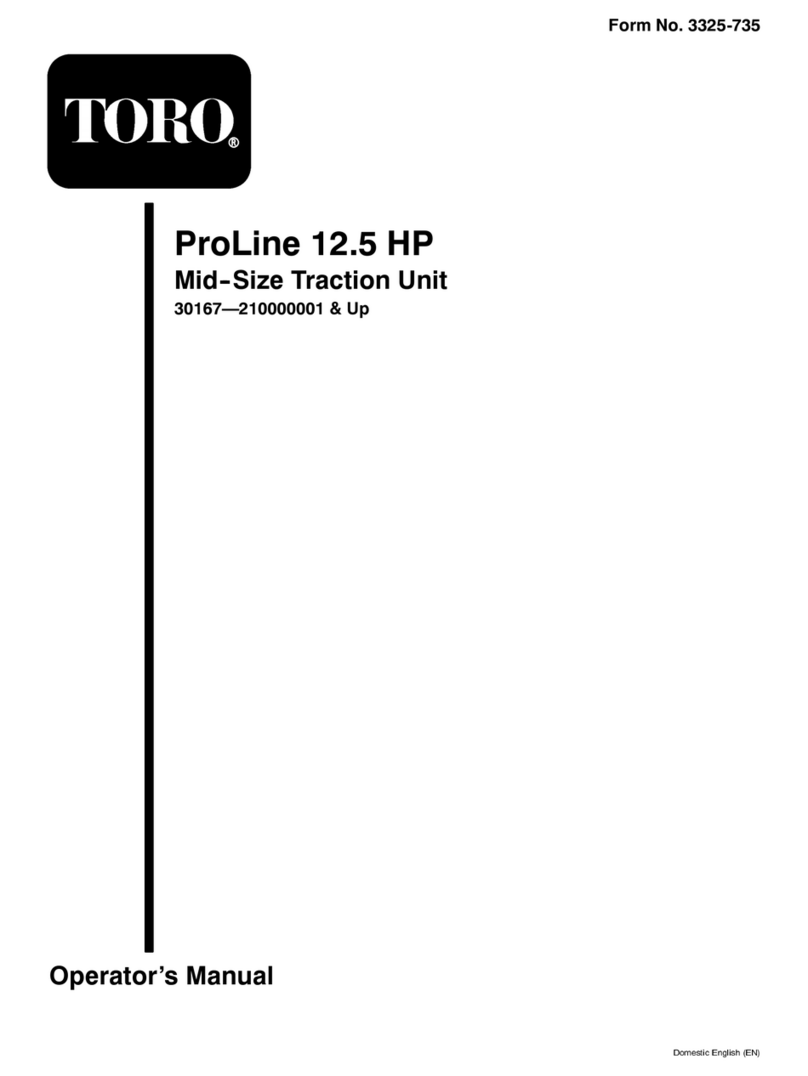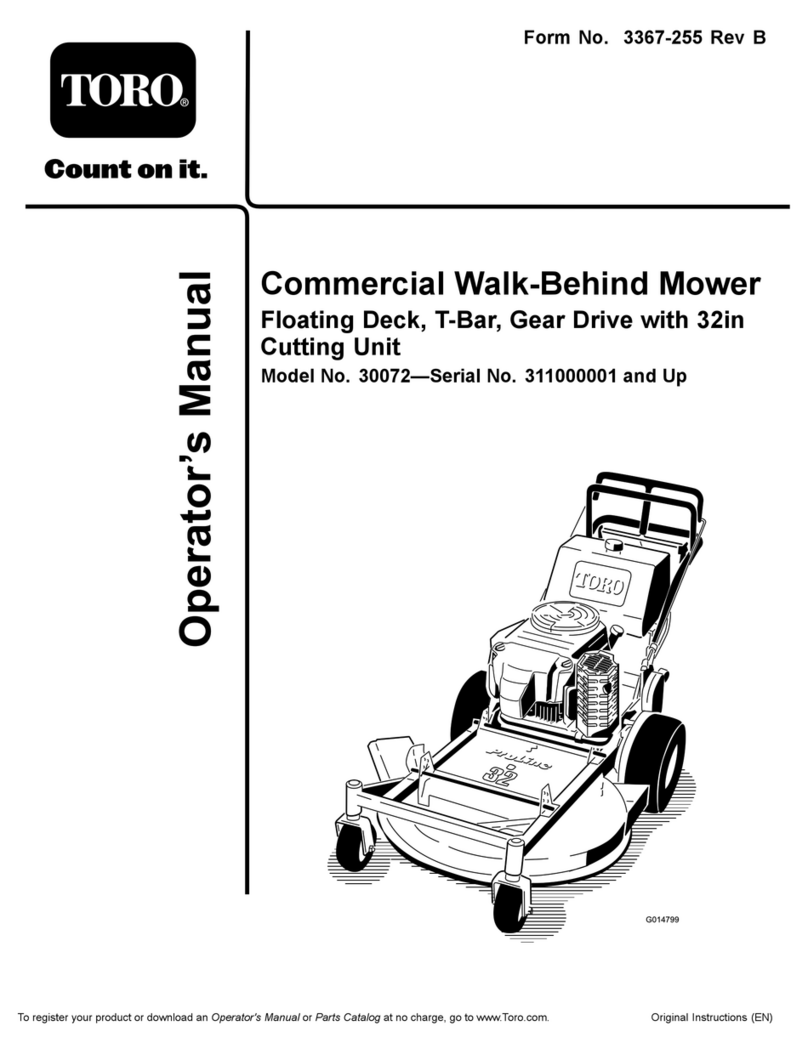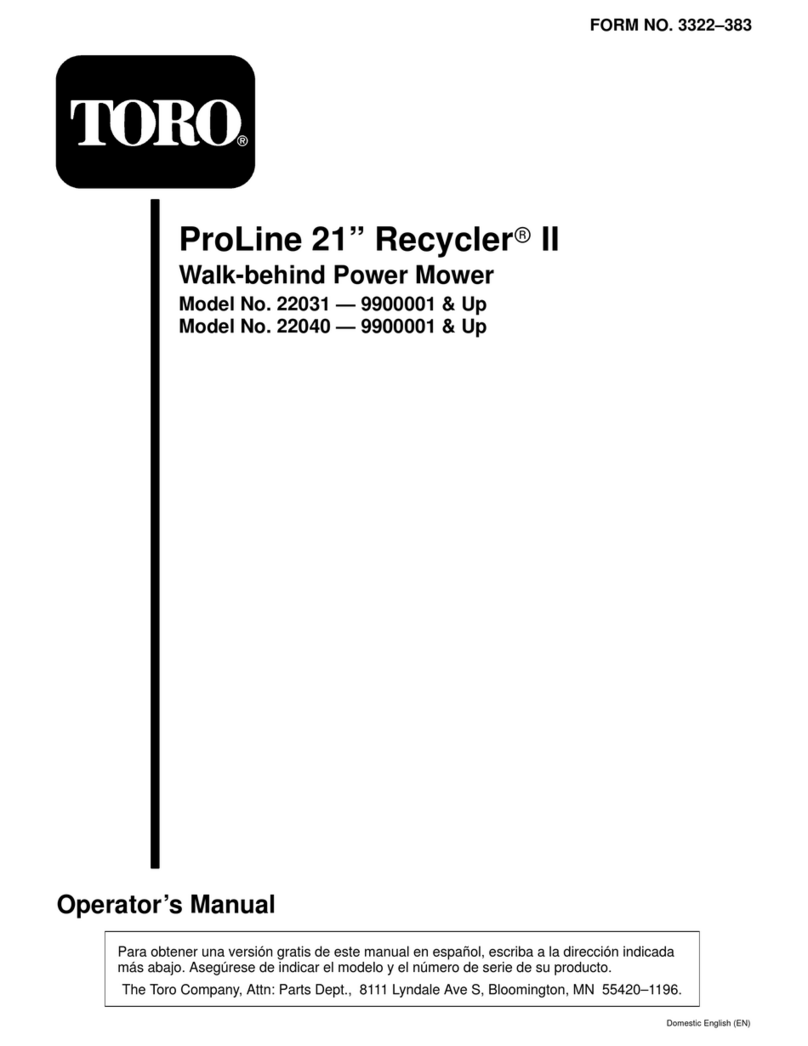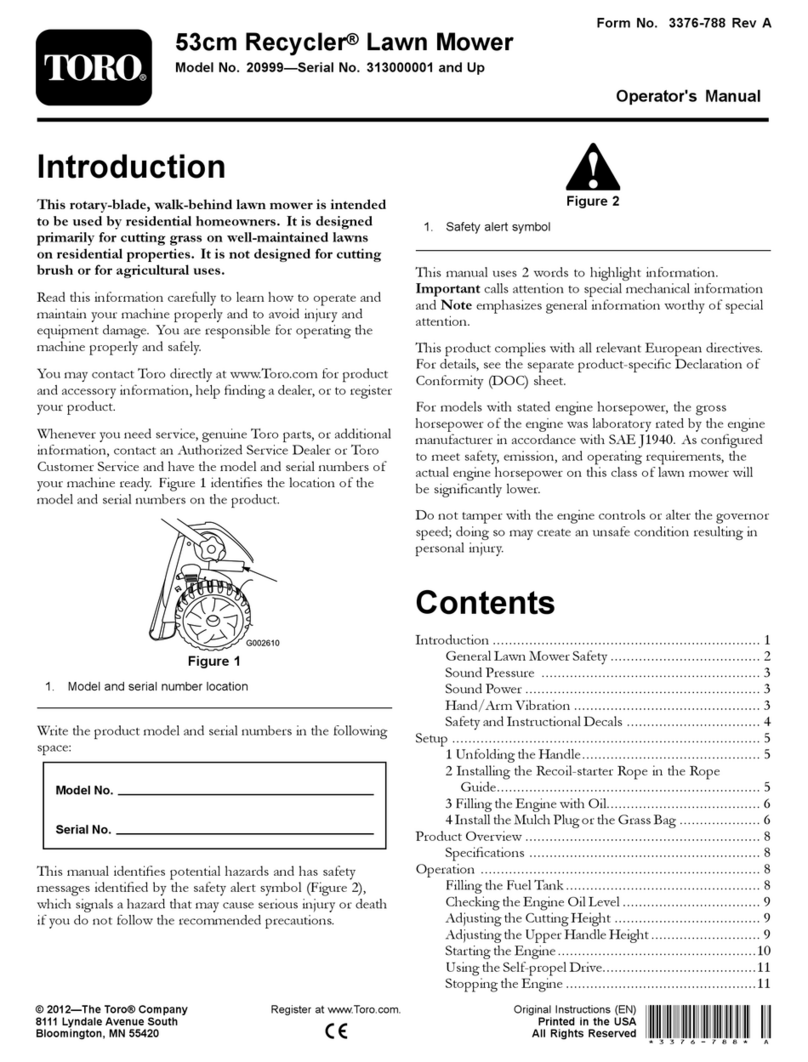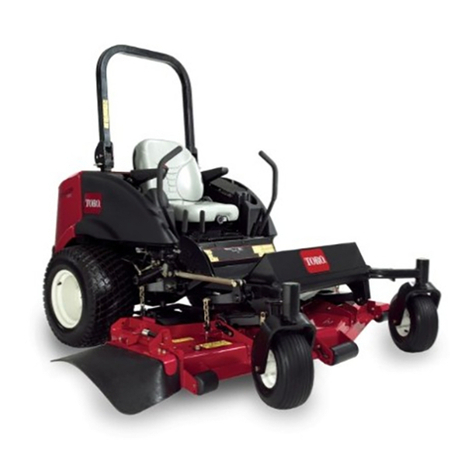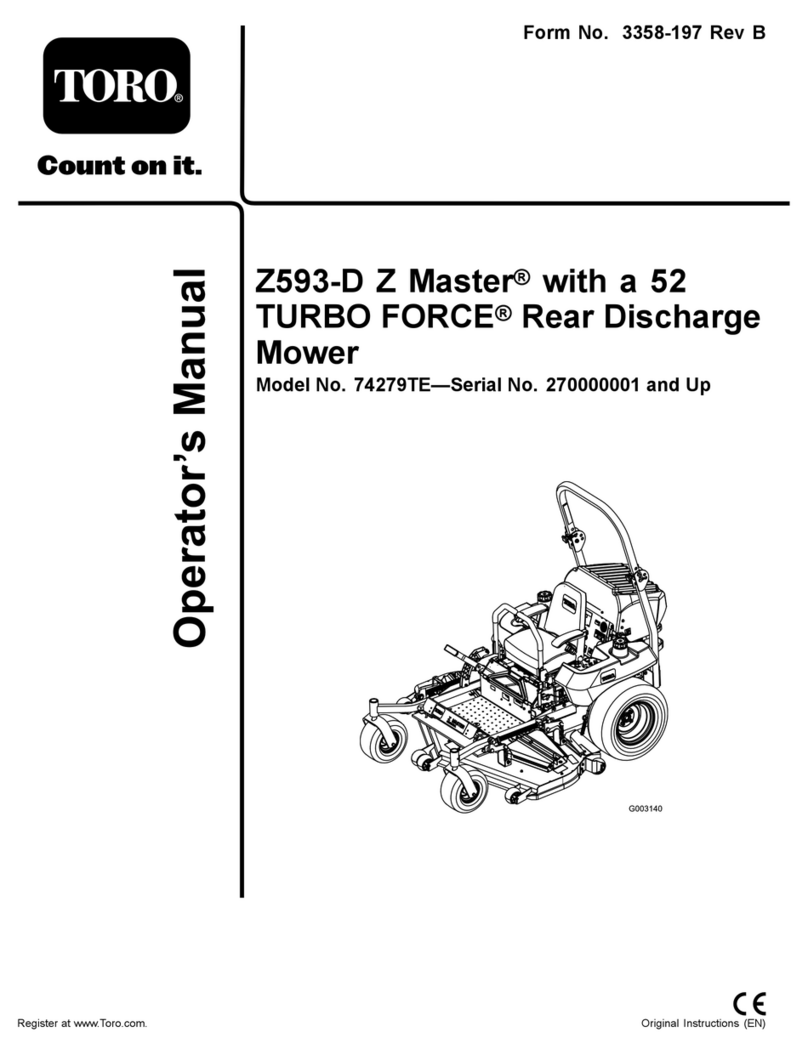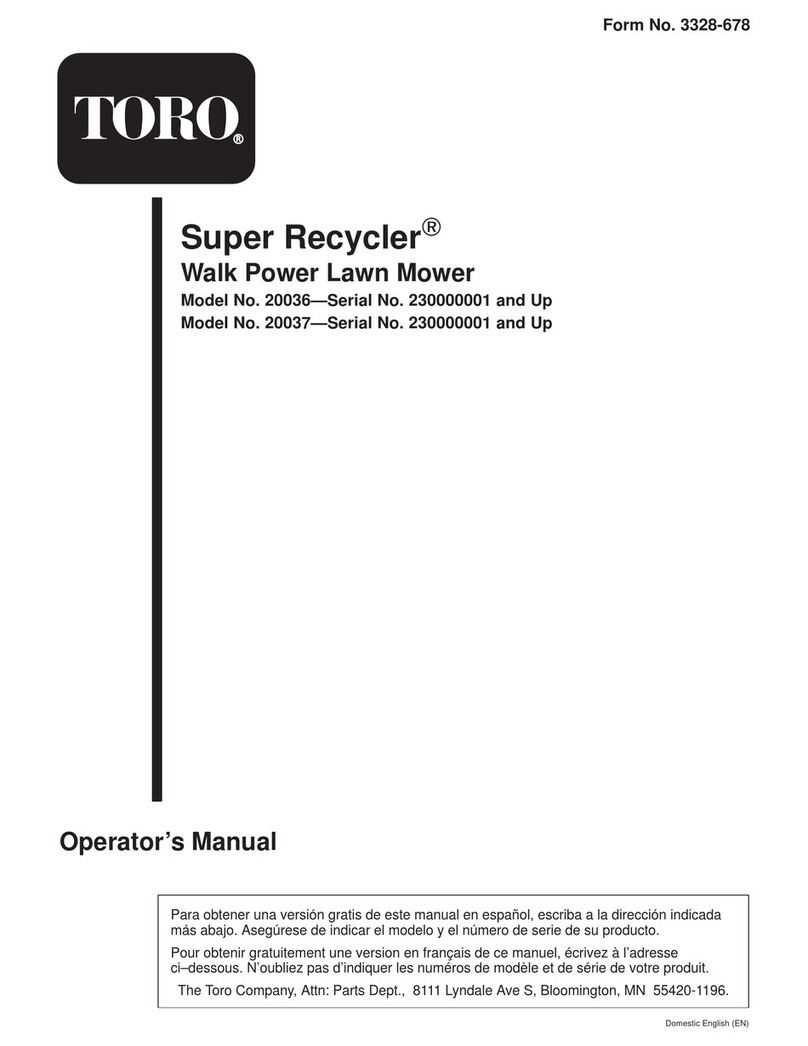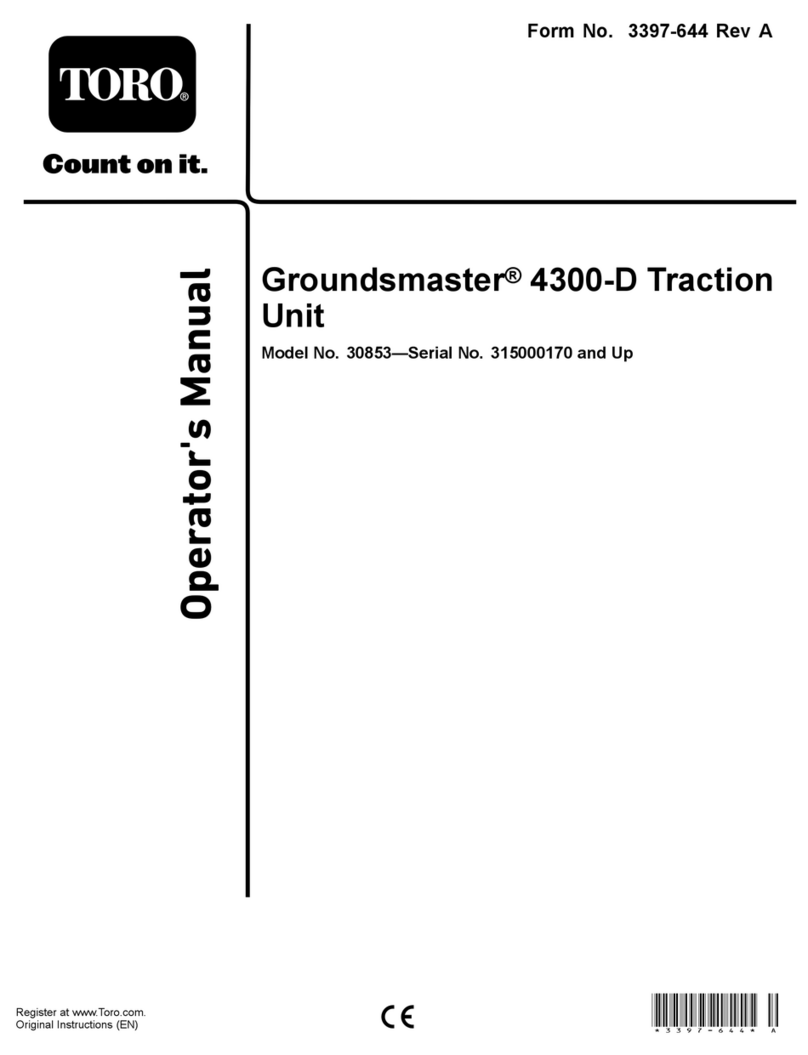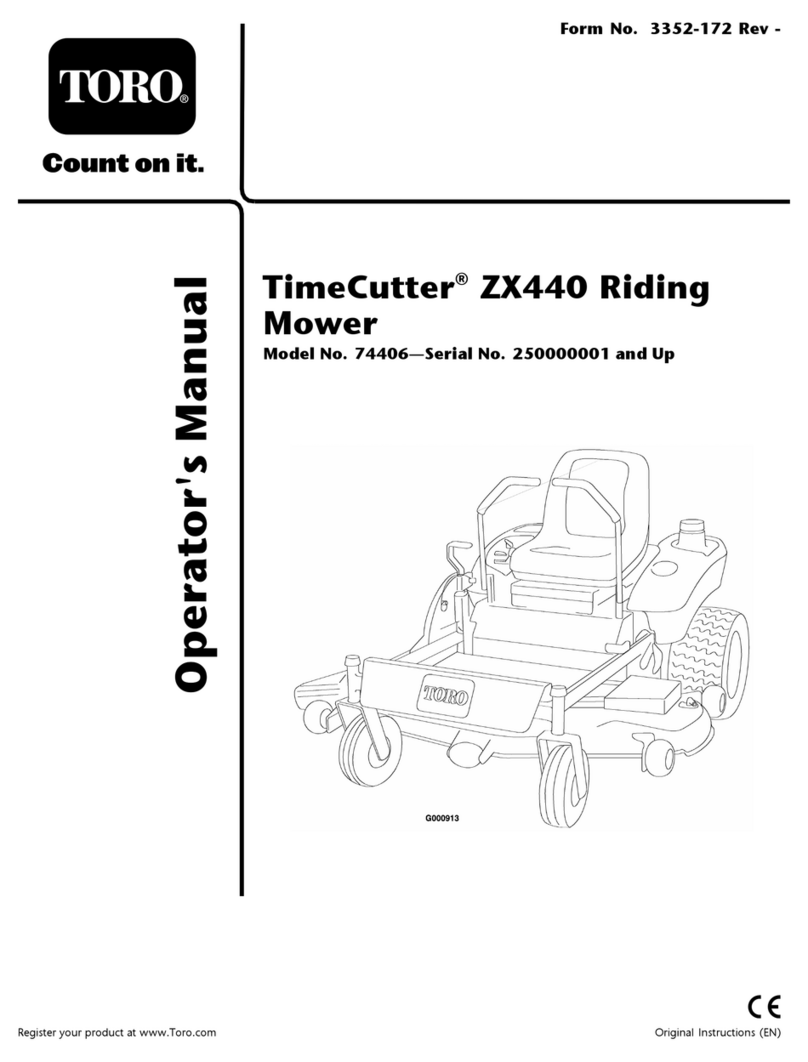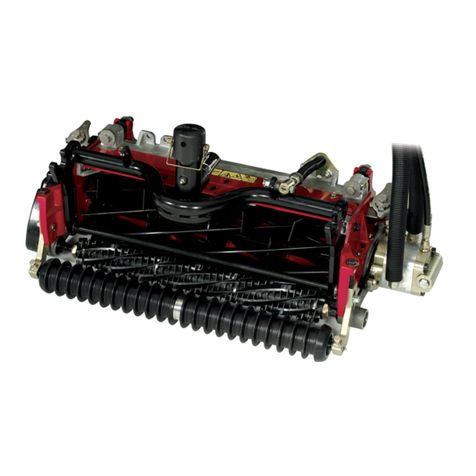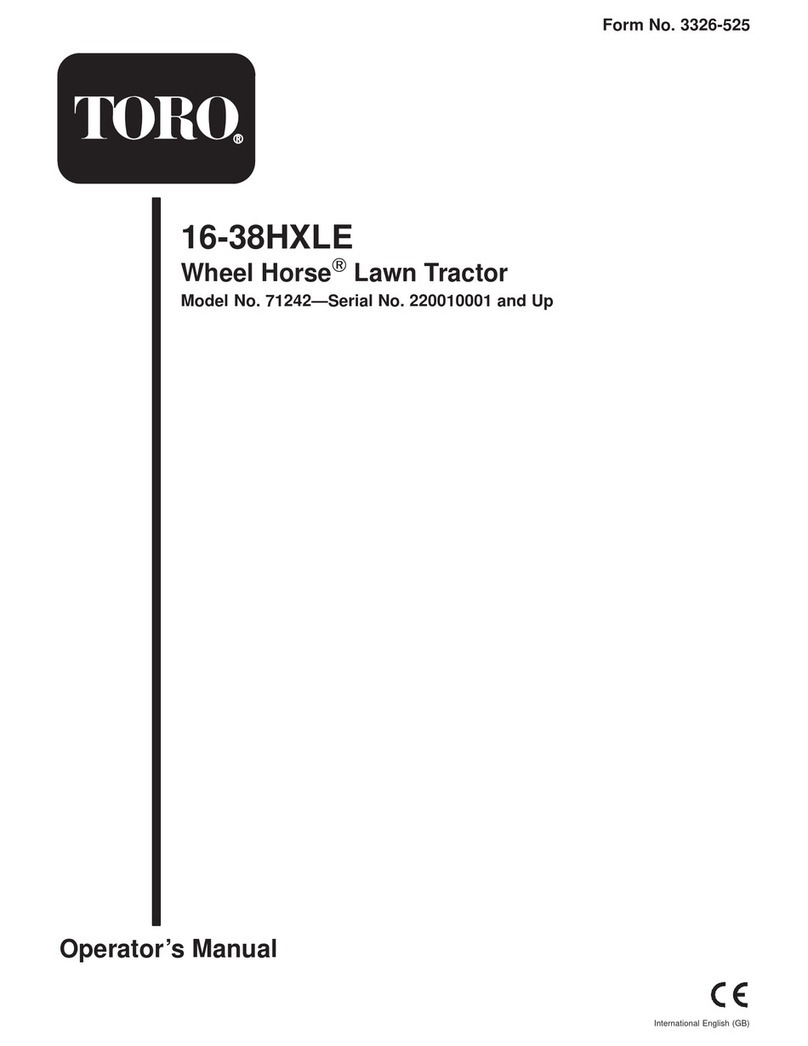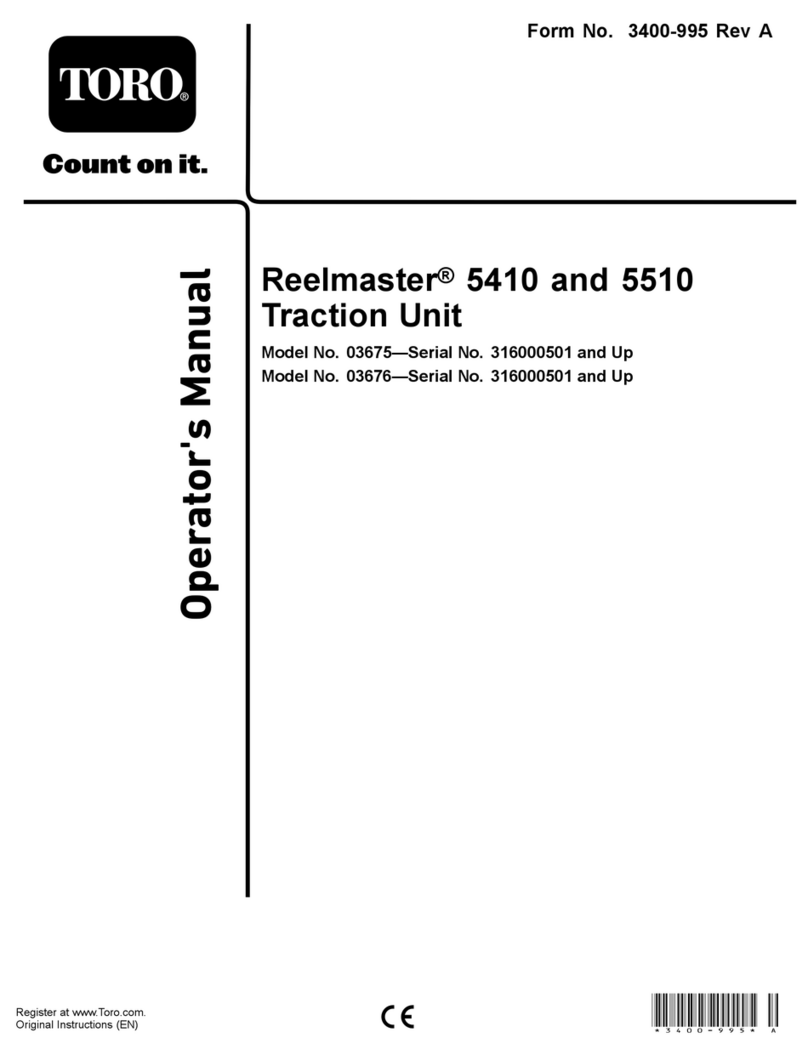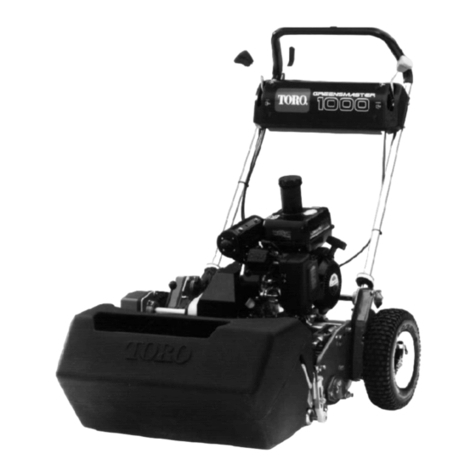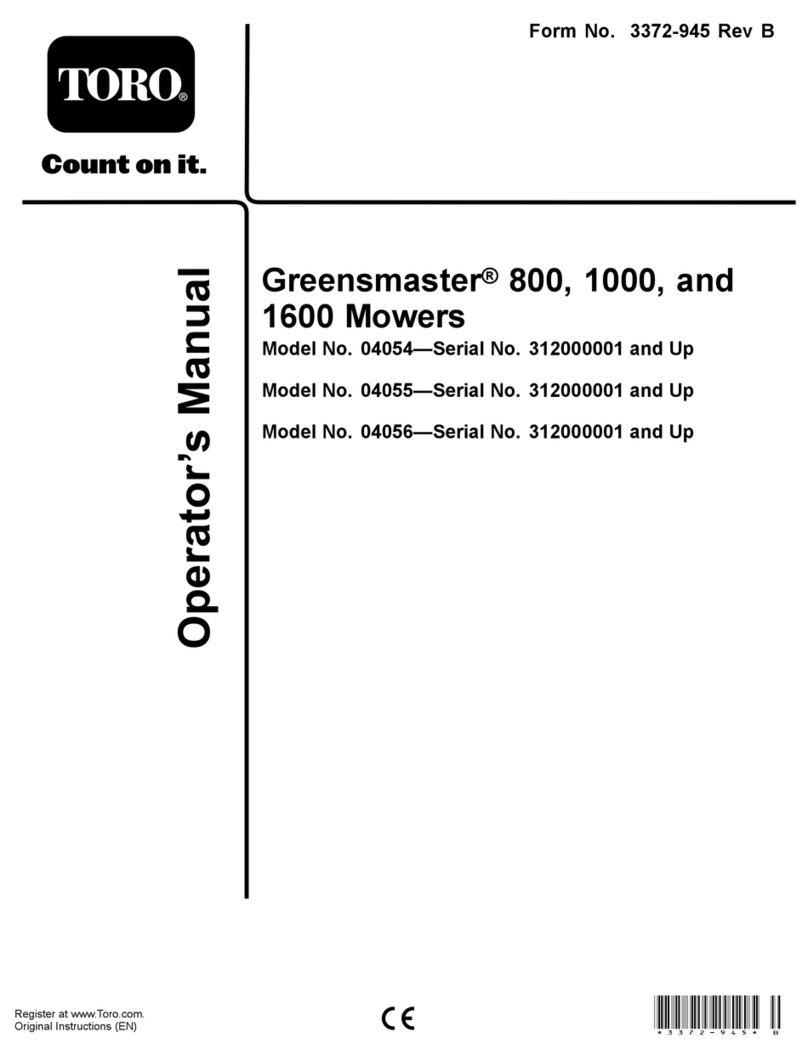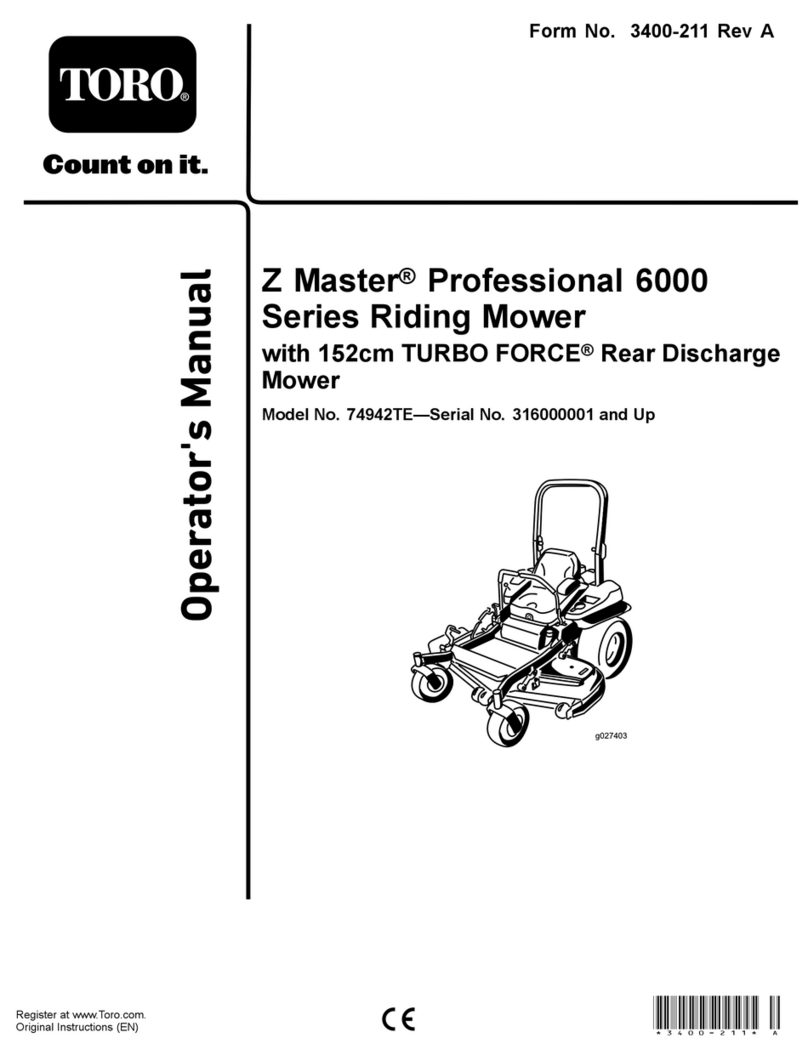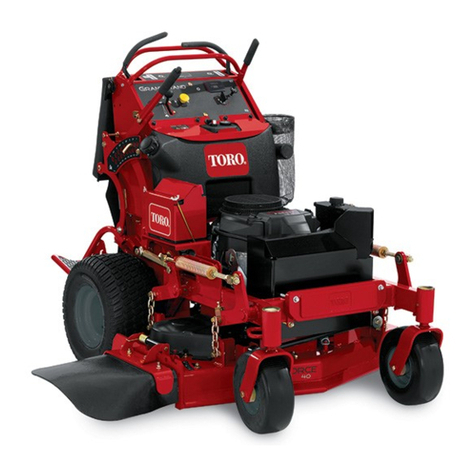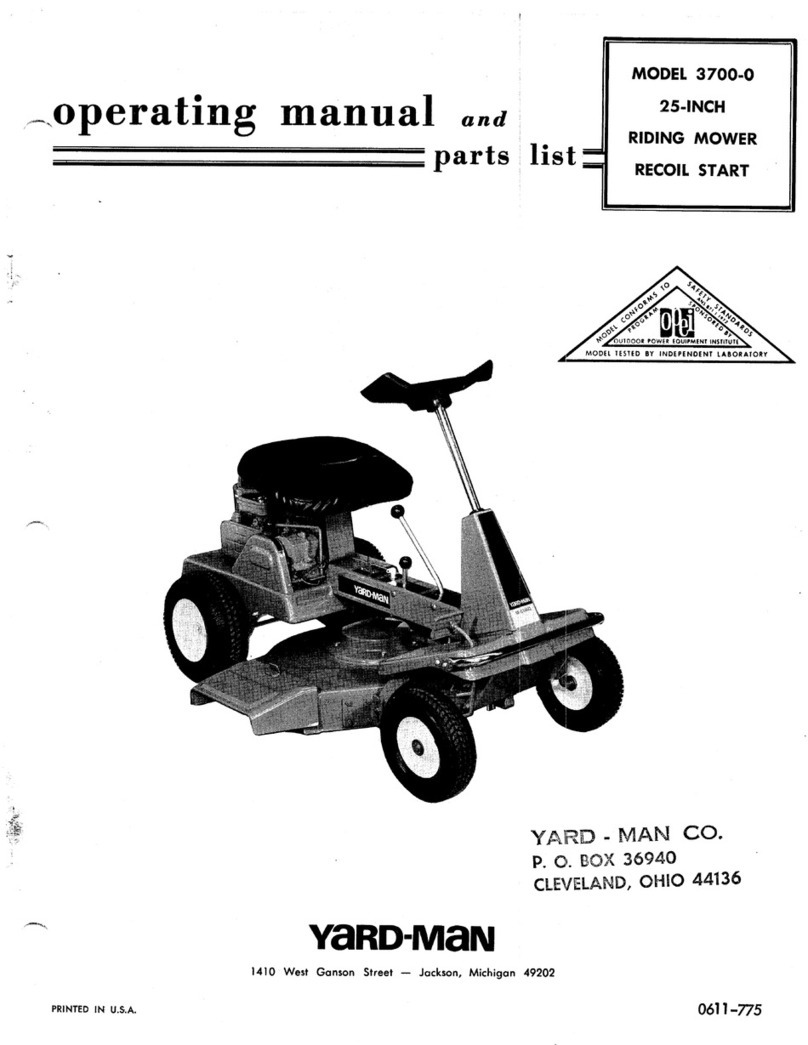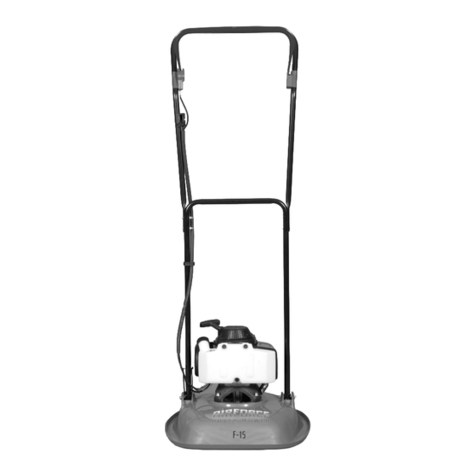
Diesel Model
216 Diesel Engine: Perkins, 4-cycle, 3-cylinder, liquid
cooled, vertical overhead valve, diesel engine with cen-
trifugal water pump. 16.5 hp governed to a maximum
speed of 3200 rpm. 37.60 cu. in. displacement. Forced
lubrication gear pump. Mechanical fuel transfer pump.
Fuel filter/water separator with replaceable filter ele-
ment. Heavy-duty remote mounted air cleaner.
Radiator: Side mounted radiator, industrial construc-
tion. Cooling system capacity is 5 liters (5-1⁄4quarts).
Electrical: 12-volt starter. Interlock switches. 14-amp
alternator with remote electronic regulator rectifier.
Fuel Capacity: 24.6 liters (6.5 gallons.)
Hydraulic Oil Capacity/Filter: 8.7 liter (2.3 gallon) oil
reservoir. 12.5 liter (3.3 gallon) total system capacity.
10-micron remote mounted spin on the filter.
Ground Speed: Infinitely variable speed selection in
forward and reverse
Mowing speed: 0–8 km/h (0–5 mph)
Transport speed: 0–12.9/kmh (0–8 mph)
Reverse speed: 0–3 km/h (0–4.8 mph)
Gasoline Model
216 Gasoline Engine: Kohler, 4-cycle, air cooled, 11.9
kW (16 hp) @ 3,600 rpm, 588 cc (35.9 cu. in.) displace-
ment. Mechanical fuel pump, large capacity dual ele-
ment air cleaner, 2.5 l (5-1/4 pint) oil capacity
Steering: Adjustable steering wheel. Pinion gear and
sector gear with solid drag link to the rear steer wheel
arm.
Fuel Capacity: 22.7 liters (6.0 gallons.)
Electrical: 12-volt starter. Interlock switches. 15-amp
alternator with remote electronic regulator rectifier.
Ground Speed: Infinitely variable speed selection in
forward and reverse
Mowing speed: 0–8 km/h (0–5 mph)
Transport speed: 0–10.5 kmh (0–6.5 mph)
Reverse speed: 0–4.8 km/h (0–3 mph)
Both Models
Traction Drive: Hydrostatic drive; variable displace-
ment pump, infinitely variable in both forward and
reverse direction. High-torque hydraulic wheel motors.
Brakes: Service braking through the dynamic character-
istics of the hydrostat. Parking or emergency brake is
actuated by a ratchet hand lever.
Tires/Wheels: Two front traction tires, 18 x 8.50-8,
tubeless, 4-ply rating. Rear steering tire 18 x 6.50-8, 4-
ply tire with tube. Recommended tire pressure 97–138
kPa (12–16 psi).
Frame: The frame consists of formed steel, welded steel
and steel tubing components.
Model 03420: Tricycle vehicle with 2-wheel traction
drive in front and rear wheel steering.
Model 03425: Tricycle vehicle with 3-wheel traction
drive and rear wheel steering.
Model 03410: Tricycle vehicle with 2-wheel traction
drive in front and rear wheel steering.
Model 03430: Tricycle vehicle with 3-wheel traction
drive and rear wheel steering.
Cutting Unit Lift: Hydraulic lift with an automatic reel
shut off.
Overall Dimensions:
Wheel tread width: 137.2 cm (54 in.)
Wheel base: 139.7 cm (55 in.)
Width: 205.7 cm (81 in.)
Length: 233.7 cm (92 in.)
Height: 109.2 cm (43 in.)
Weight with 5-blade cutting unit:
Model 03420: 449.8 kg (1,205 lb.)
Model 03425: 461 kg (1,235 lb.)
Weight with 8-blade cutting unit:
Models 03410, 03430: 467 kg (1,250 lb.)
9
Specifications
